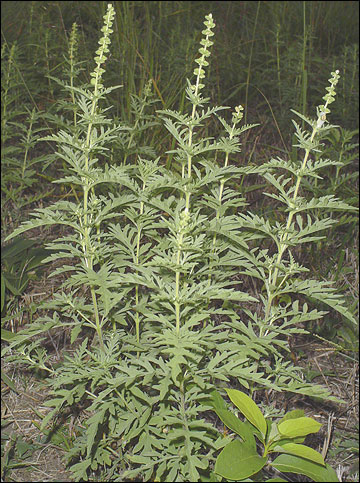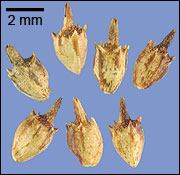Ragweed, common
- Ambrosia artemisiifolia
Forb
Common ragweed's upright structure and dense foliage makes it ideal as brood habitat.
Scott Sudkamp, Missouri Department of Conservation
Description
Common ragweed is an annual, commonly growing to 18 inches. Found throughout the Midwest, it quickly comes up in disturbed areas or following a fire. Leaves are simple, alternate, smooth and deeply lobed. Often the lobes are lobed again. Common ragweed is similar in appearance to western ragweed, a perennial species common throughout the Great Plains.
Bloom period
July to October
Use by bobwhites
While the plants in this genus are persecuted as a field weed and the cause of hay fever, ragweed is undoubtedly among the most important foods of bobwhites. Ragweed seeds have a high energy content and are likely to be found in the crop of any bobwhite in fall and winter. It may be one of the few plants standing and holding seed above snow and ice during severe winters. In addition, patches of mature ragweed serve as roosting cover, while the structure of the plant and its tendency to thrive in early successional plant communities make it good brood cover as well. Ragweed responds best to disturbance in the fall; disking or burning in late spring may kill more seedlings than it stimulates.








